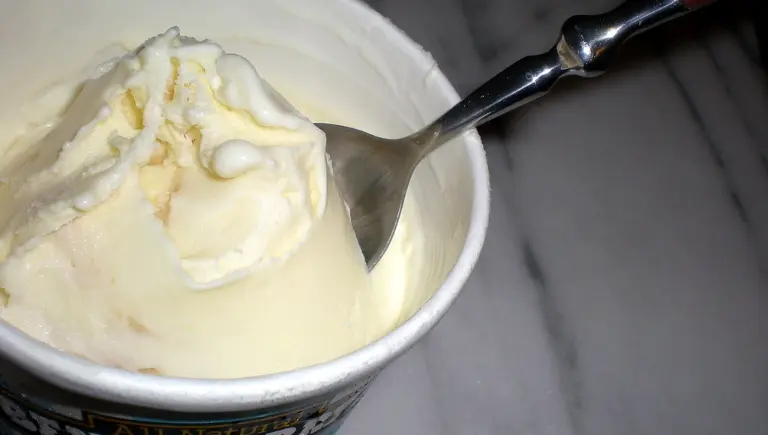Why Do We Get Brain Freeze? The Real Science Behind the Pain
Have you ever raced to finish an ice cream cone only to be hit with a sharp, sudden headache? That’s brain freeze, also called sphenopalatine ganglioneuralgia. It happens so fast and feels so strange that many of us wonder what’s behind this chilly pain. Brain freeze is surprisingly common, affecting people of all ages, yet its cause remains a bit of a mystery. Understanding why it happens and how to stop it can make enjoying cold treats a lot more fun—and less painful.

What Is Brain Freeze? Understanding the Phenomenon
Definition and Basic Explanation
Brain freeze is a quick, intense headache caused by eating or drinking something very cold. It’s a temporary pain that strikes the forehead, often feeling like a sudden sharp sting. Common triggers include ice cream, icy drinks, or frozen treats. You know that feeling—when the cold hits the roof of your mouth and suddenly, ouch! Your head aches.
Scientific Perspective
Scientists link this pain to a nerve called the sphenopalatine ganglion, a bundle of nerves located behind your nose. When cold touches the roof of your mouth or palate, it sends signals along nerves to the brain. This triggers pain sensors that interpret the signals as a headache. It’s like your nerves are reacting to a tiny shock, making your brain think your head hurts.
💡 Did You Know?
The sphenopalatine ganglion is also involved in migraines and facial pain—not just brain freeze!
How Common Is Brain Freeze?
Research shows that most people experience brain freeze at some point. Up to 90% of ice cream lovers report feeling it. It’s more frequent in kids and teens, who tend to eat cold foods faster. People who indulge in frozen treats often find themselves dealing with brain freeze once in a while, making it a familiar, if annoying, part of summer and dessert time.
The Science Behind Brain Freeze: Why Does It Happen?
The Role of Nerves and Blood Vessels
Your nerves play a big part in this chilly headache. When cold hits the roof of your mouth, it causes quick changes in blood flow and nerve signals. Blood vessels constrict and then quickly expand, which can trigger pain signals to your brain. These rapid shifts are thought to cause the headache sensation.
Rapid Cold Exposure and Its Effect
The faster the cold touches your palate, the more likely you are to get brain freeze. Sudden cold exposure causes the nerves and blood vessels to respond quickly, sending pain signals to your forehead. Eating slowly or taking small bites helps your body adapt, reducing the chances of brain freeze striking.
The "Referred Pain" Mechanism
Brain freeze is a type of referred pain. It hurts in the forehead, but the source is actually in your mouth. Your brain gets confused and interprets the nerve signals from your palate as coming from your forehead. This is similar to how a heart attack can cause pain in your arm or jaw—pain perceived far from its real cause.
Why Do Some People Experience Brain Freeze More Than Others?
Individual Differences in Nerve Sensitivity
TSome people have nerves that react more strongly to cold. Genetic factors or natural differences in nerve sensitivity can make certain individuals more prone. If your nerves are extra sensitive, you might experience brain freeze even with smaller mouthfuls.
Frequency of Cold Food Consumption
People who regularly eat cold foods and drinks can develop a kind of “numbness,” making it less likely to trigger brain freeze. Conversely, occasional cold treat eaters might be more susceptible to sudden pain because their nerves aren’t used to the cold.
Possible Age-Related Variations
Kids tend to get brain freeze more often and more intensely. Their nerves are more sensitive, and they often eat cold foods quickly. Adults usually have built some tolerance and are more aware of ways to prevent it.
How to Prevent Brain Freeze: Pro Tips and Tricks
Slow Down Cold Food Intake
One of the easiest ways to avoid brain freeze is to eat or drink slowly. Small bites or sips give your mouth time to warm up the cold and reduce nerve activation.
📌 Quick Tip
Always let ice cream sit for a few seconds before eating—it reduces the risk of sudden headaches.
Use Your Tongue or Palate
Documented sightings mean more than just pop culture—they influence military and aviation policies. Pilots are trained to report strange objects, and agencies work on protocols to handle future encounters. Transparency and ongoing investigations are key to keeping the skies safe.

Avoid Cold Contact with the Roof of Mouth
Stay away from pressing large amounts of cold ice or ice cream directly against the roof of your mouth. Use a spoon or let the cold treat sit in your mouth longer.
Warm Up Cold Foods or Drinks
Warming your cold beverages slightly, or letting ice cream sit out for a minute, can help make cold contact less shocking for your mouth.
How to Stop Brain Freeze Immediately
Throat or Mouth Techniques
Take a sip of warm water or place a warm, damp cloth on your forehead. Swallowing or sipping helps warm the palate quickly, shutting down the nerve signals causing the pain. Breathing through your nose, instead of your mouth, can also help balance your mouth and head temperature.
Applying Physical Pressure
Press your tongue or thumb against the roof of your mouth. The gentle warmth and pressure can soothe nerves and stop the pain fast.
Using Distraction or Relaxation
Focusing on breathing deeply or thinking about something else can help you ignore or ease the pain. Relaxing your forehead muscles also reduces head tension caused by the headache.

Expert Insights and Additional Tips
Many doctors say brain freeze isn’t harmful, just uncomfortable. Neurologists confirm it’s a temporary, nerve-triggered headache. Scientific studies show that slowing down your eating or drinking is the best way to prevent it. Forget the myth that brain freeze causes brain damage—it’s just a quick, harmless headache caused by nerve reactions.
Additional Facts and Interesting Trivia
Did you know that ice fishermen and polar explorers take measures to avoid cold headaches? Some use special warming pads or take small sips of warm drinks before handling cold conditions. Historians say that Ancient tribes believed cold foods could cause brain issues, but science has proved it’s just a fleeting pain—no real harm involved.
🔹 Info Box
Brain freeze only lasts about 20–30 seconds, but can feel much longer due to nerve overreaction.
Conclusion
Brain freeze is a fascinating, if annoying, response to rapid cold exposure in your mouth. It results from nerves and blood vessels swiftly reacting to cold stimuli, causing a quick headache in your forehead. The good news? It’s easily preventable and quickly relieved with simple tricks like warming your palate or slowing down. By understanding the science behind brain freeze, you can enjoy icy treats without the pain. Grab that spoon, take your time, and savor your cold desserts—pain-free!







